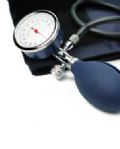|
For two years I was a sex-ed teacher. One of my favorite subjects to teach was puberty, which required me to ever-so-gingerly reveal the story of the birds and the bees to a room full of red-faced fourth graders. Over the course of three days, I’d observe these kids in alternating states: wide-eyed with wonder, beside themselves in embarrassment, and rolling-on-the-floor in laughter. My teaching tools were simple: poster-sized drawings of the male and female reproductive organs, and a demo “puberty bag”, containing a variety of items that related to puberty, to help congeal the knowledge I’d (hopefully) transferred to them over the course of the session. Brave volunteers would blindly choose an item from the bag and explain to the class how it could come in handy during puberty. Besides the obvious likes of sanitary pads and pimple cream, the kit contained a plastic ear, to represent the fact that it’s useful to have someone to talk to during the sometimes difficult years of adolescence, and a jump rope, to represent the importance of exercise. Those kids learned that exercise not only helps you to stay fit and healthy, but for the burgeoning women in the room, it could actually help ease unpleasant effects of the menstrual cycle, like cramps and bloating. If you’re reading this, you’re obviously not in the fourth grade, but that might have been the last time you reviewed the basics of your menstrual cycle. But if you're like most women, you might have never learned how to effectively mix that time of the month with a regular exercise routine. Read on for a period refresher, and information about how to work with your cycle when you’re trying to get and stay fit. Cycle Basics Your menstrual cycle begins on the first day of your period. It continues until your next period begins, usually about 28 days later. We break up the cycle into several phases, which occur as follows (keep in mind that every woman's cycle varies, so the numbers you see below are estimates):
There are many benefits to exercising during your period. Working out can help:
The following suggestions will help you develop a synergy between menstruation and exercise, so you can optimize your workouts, and your periods.
If you try all of the above suggestions and your periods are still painful, listen to your body. Take a few days off if you need to, or focus on non-pelvic body parts, like your biceps and triceps. If your period symptoms are so rough that they're hindering you from performing your daily activities, then you should see your women’s health care provider. Some women are concerned that if they exercise too much, their periods will stop altogether. If your periods are not regular, or seem to be fading away, see your doctor. But keep in mind that if you're not a vigorously-training athlete, exercise is probably not the cause of your cycle irregularity. Exercise-induced amenorrhea usually occurs in athletes who train vigorously, like long-distance runners (more than 30 miles a week), but it's thought to be triggered by the loss of body fat (fat cells are essential for hormone production), rather than exercise itself. Assuming that your menstrual irregularities are due to exercise might mean that other treatable causes get ignored. Amenorrhea can be dangerous to your overall health and warrants a visit to your women’s health care provider, as it can cause premature osteoporosis, infertility, and a higher risk of cardiovascular disease. What I hoped to convey to those fourth-grade kids is what I hope to convey to you: exercising during your period will not result in physical damage, and it is safe and beneficial (unless your physician advises against it). And more importantly, that your body is amazing! If you respect your body by understanding it, listening to it, and caring for it, it will serve you well for a lifetime. |








